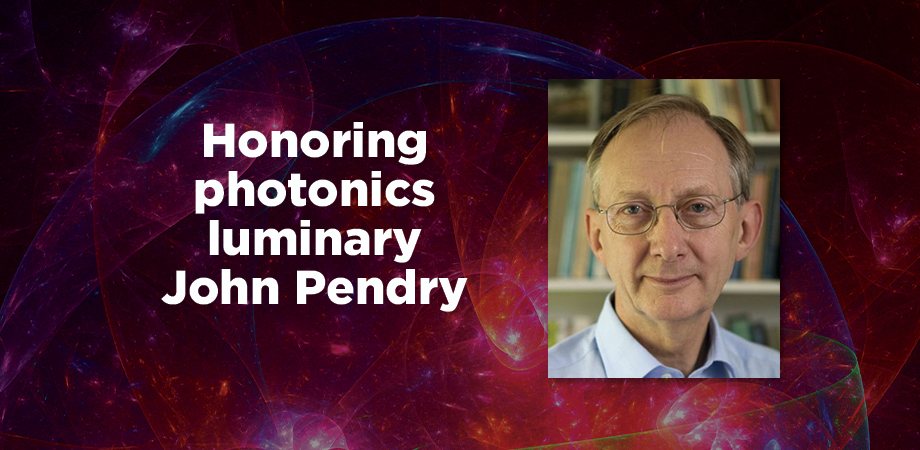SPIE Luminary John Pendry

The SPIE Luminary Series
In 2021, SPIE celebrates the work of those who have "lit the way" for research in optics and photonics. Each of these luminaries has made a significant impact on the development of a field that is core to SPIE, including biomedical optics, electronic imaging, optical systems, lens design, neurophotonics, light-based energy research, remote sensing, medical imaging, and nanophotonics. A different luminary will be featured each month.
Many of these luminaries have published with SPIE for decades, while others are newer to our community. To highlight their contributions to the literature, SPIE will make all of their SPIE-published research open access for one month on the SPIE Digital Library, including SPIE Proceedings and journal papers.
April Luminary: John Pendry
Theoretical physicist John Pendry, a leader in transformation optics and professor at Imperial College London, is known for describing the possibility of a "cloaking device" or "invisibility cloak," first noted in 2006. The concept drew on using the nanostructure of metamaterials to guide light around an object in the same way that water might flow, making the object effectively invisible. While no one has made a Harry Potter-style invisibility cloak just yet, those original ideas have been transformative, leading to a variety of scientific exploration and research, from acoustic cloaking to protecting buildings from earthquakes.
Across his career as a condensed matter theorist, Pendry has worked extensively on electronic and structural properties of surfaces, developing the theory of low-energy diffraction and of electronic surface states. His interest in transport in disordered systems led him to produce a complete theory of the statistics of transport in one-dimensional systems; his focus on photonic materials led to his research in the electromagnetic properties of metamaterials.
Pendry is the 2013 recipient of the Newton Medal from the UK's Institute of Physics "for his seminal contributions to surface science, disordered systems, and photonics," and, with Stefan Hell and Thomas Ebbesen, recipient of the 2014 Kavli Prize in nanoscience, "for transformative contributions to the field of nano-optics that have broken long-held beliefs about the limitations of the resolution limits of optical microscopy and imaging." In 2019, he won the SPIE Mozi Award in recognition of his contributions to the development of the perfect lens.
"Professor Pendry is one of the most prolific and imaginative theoretical physicists working in the area of optics and metamaterials," says Advanced Photonics Co-Editor-in-Chief Anatoly Zayats. "He has so many great achievements in the field of photonics and metamaterials that it is really difficult to name the most important one. It was Professor Pendry, for example, who proposed and developed the transformation optics technique which is currently used as a method of choice for designing light and sound propagation in complex structured media, as well as the development of metamaterials required for practical applications. He has initiated many new ideas which then were demonstrated experimentally, including invisibility cloaking and diffraction-unlimited lensing, and his breakthroughs are based on the out-of-box innovative ideas which challenge conventional approaches. Metamaterials and transformation optics continue to thrive, and we are delighted to publish the many new advances in Advanced Photonics."
For the month of April, all of John Pendry's papers in the SPIE Digital Library will be open access to honor his contributions to photonics.



